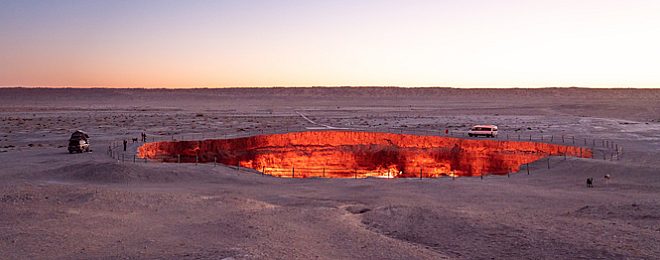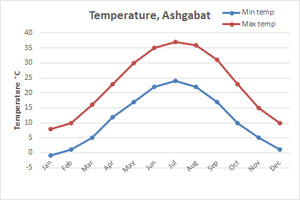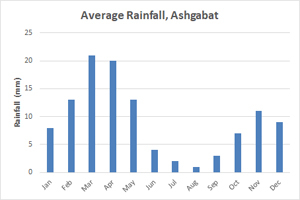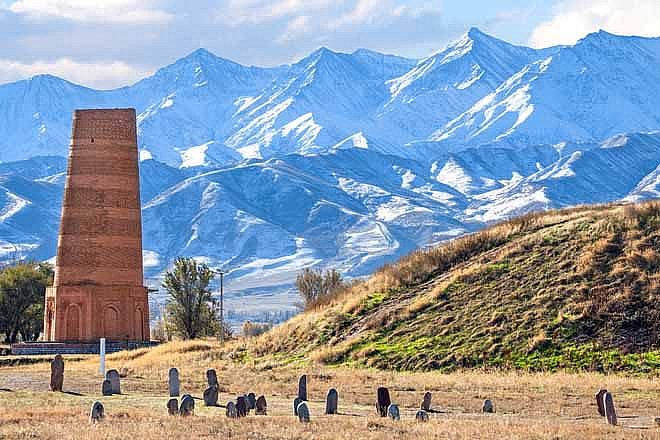Our grading system explained
Turkmenistan

The least-known of the Five Stans, Turkmenistan offers ancient ruins, a shining modern capital, vast desert and suprising natural wonders.
Show me:
1 Holiday
- Discover the splendours of the ancient Silk Road cities
- Explore ruined desert cities in the desert and important archaeological sites
- See natural wonders such as the Charyn Canyon and the ‘Gates of Hell’
- Enjoy the splendid scenery of the Fann Mountains
- Learn about the many artisan crafts of the region
- Try your hand at yurt building and archery
- Take in the modern-day highlights of Tashkent and Ashgabat
- Travel throughout with a Tour Leader plus local expert guides
Flight inclusive from £6490, Land only from £5750
- 1
Introduction
Turkmenistan, formerly part of the USSR, is one of the quirkiest and most unique countries of Central Asia. It is still very much a destination for the adventurous traveler and one of the most oddball of countries though the Turkmen people are happy to welcome you to their unusual country and to share their traditional culture. Once at a crossroads of civilization, Turkmenistan is nowadays one of the least known and least explored of the 5 Stans. It is a country of extremes, of harsh landscapes and extreme climate. Much of the country is desert - the Karakum Desert, (literally ‘black sands’) a region of vast landscapes and fearsome reputation, makes up 80% of the country’s area. It is not so long since its only inhabitants were nomads but in the past Alexander the Great passed through with his armies on his way to conquer India, and other empire builders such as Genghis Khan also left their mark. Important Archaeological ruins such as Kunya-Urgench, Nisa and Merv mark major stops along the ancient Silk Road.
Formerly oases were a lifeline across the desert for caravans travelling on the Silk Road, and because of the scarcity of water they were the only places were habitation or crops were possible and were the sites of the ancient cities of the region. Traditionally the life of the Turkmen people was that of nomadic shepherds. The Turkmen are known for their fine carpets – one is even featured in the flag of Turkmenistan - and they are also well known for breeding fine horses.
In the 19th century Turkmenistan came under the control of Russia, with the most obvious legacy of their influence being the ambitious Karakum Canal, one of the world’s longest irrigation canals, running for 1000 kms from the Amu Darya River across the Karakum desert to the Caspian Sea. This canal opened up huge new tracts of previously uncultivable land to agriculture, especially to a cotton monoculture.
More recently, although Turkmenistan is the poorest of the Five Stans, it does have significant oil and natural gas deposits which are still relatively unexploited. Evidence of this rich resource is currently seen in one of the country’s major tourist attractions – the surreal Darvaza Gas Crater, is a burning natural gas field collapsed into a crater, where natural gas fires illuminate the floor and rim of the crater. The crater also called the ‘Door to Hell’ has been burning since 1971.
You will get to enjoy many of Turkmenistan's natural and man-made wonders on our Five Stans of Central Asia tour.
Key Facts
• Capital city: Ashgabat
• Population: 5.6 million
• Size of country: 491,210 sq km
• Currency: the manat ( TMT)
• Power supply: 220 – 240 volts
• Sockets: European two-pin round variety
• Language: Turkmen (Turkoman) is the official language, spoken by 77% of the population. Other languages include Russian, Uzbek (9%), Tatar (1.4%), Kazakh (0.4%); and Armenian (1.4%).
• Time difference: GMT + 5 hours
• Visas: You must have a visa to visit Turkmenistan.
• Religion: 93 percent Muslim (mostly Sunni), 6.4 percent Eastern Orthodox, and 1 percent other.
• Popular dishes: Turkmen ‘Shepherd's Pie’ (Ishleki) where a flatbread type crust envelops a spiced filling and chegdermeh (a mixture of rice, tomato, meat and onions).
• Popular drinks: green tea, called gok chai which is drunk year-round, or black tea, gara chai, which is reserved mainly for autumn and wintertime.
• Did you know: Like in Bhutan, smoking is illegal in in public places in Turkmenistan and it is very difficult to buy cigarettes there.
• FCDO advice
Climate
When is the best time to travel to Turkmenistan?
The climate of Turkmenistan is arid continental. Summers are very hot and arid with clear skies, and the winters are very cold, snowy, and mostly clear.
Winters are cold in the north and relatively mild in the south, while summers are very hot and sunny.
Precipitation (rain or snow) is scarce being almost everywhere lower than 250 millimeters (10 inches) per year, and generally occurs from October to May with most wet days in Ashgabat in March. Summer is the driest season.
The best times to visit Turkmenistan are spring (March to June) and autumn (September/October to November) in order to avoid the extreme temperatures typical of the country.
Remember it can get cold at night especially in the north, and hot during the day, especially in the south.


Our climate charts will give you an idea of the likely weather conditions on your Turkmenistan holiday.





